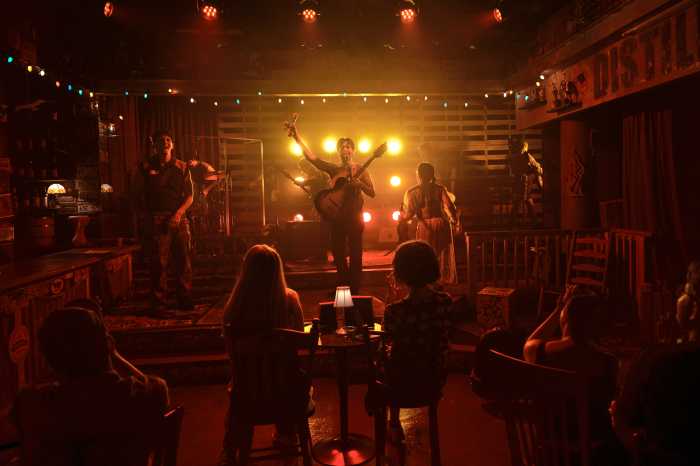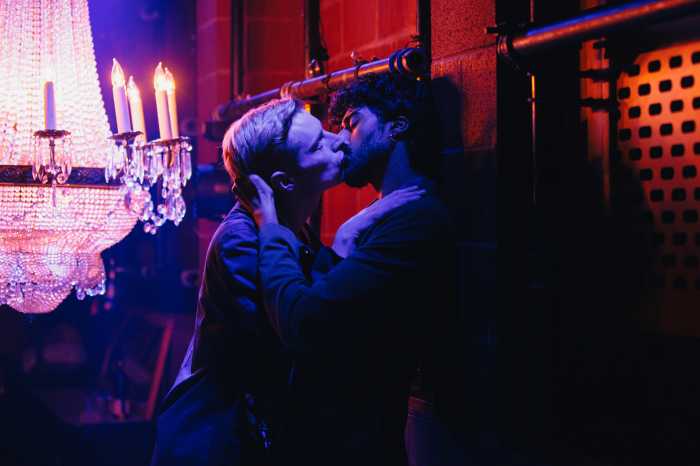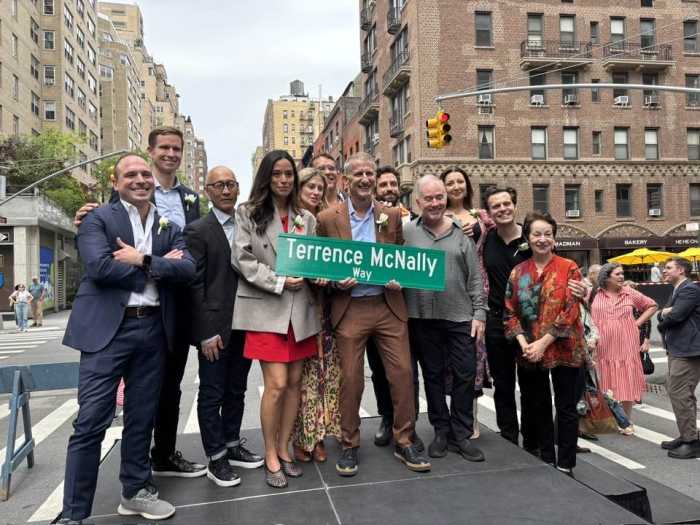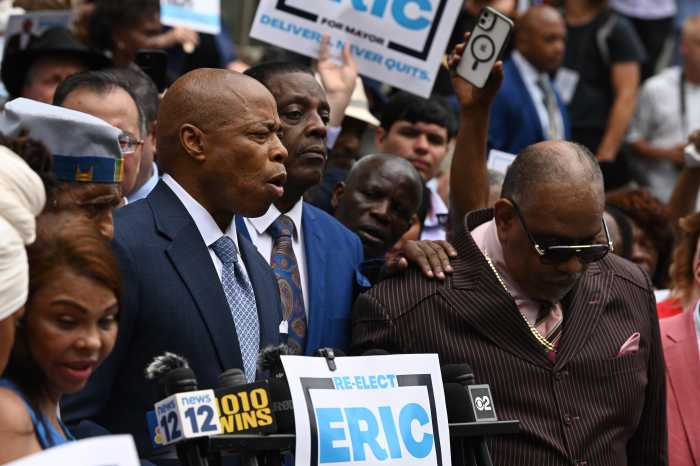“See how she shimmers. I mean, from the heart.” That's how the character Marie describes her mother, Dot, featured in George Seurat's neo-impressionist painting “A Sunday Afternoon on the Island of La Grande Jatte.” The sentence also describes the magnificent revival of “Sunday in the Park with George,” the Stephen Sondheim, James Lapine musical inspired by the painting.
A combination of intellectual discourse on art and the politics required to create it, a romance and a story of self discovery, this show has never been so clear, so fully integrated, or, frankly, as moving as it is here. Director Sam Buntrock achieves the elusive balance of head and heart with such dexterity and artistry that the production's emotional power – and there's lots of it – springs from its inherent simplicity.
SUNDAY IN THE PARK WITH GEORGE
Roundabout Theatre Company at Studio 54
254 W. 54th St.,
Tue.-Sat. at 8 p.m.;
Wed., Sat., Sun. at 2 p.m.
$36.25-$121.25; 212-719-1300
Buntrock has so thoroughly mined the characters of painter George (Seurat) and his lover and model Dot in Act One and electronic artist George (Seurat's fictional great-grandson) in the second act, that their journeys are, for the first time to me, inextricably linked, and the show makes sense as a coherent whole. Struggle, turmoil, heartbreak and, if one is lucky, a kind of freedom, are inherent to the creative process, whether in 1884 or 1984.
Sondheim classic, transplanted from London, is transcendent
Buntrock's gentle but confident direction exposes the inherent vulnerabilities of both Georges and ultimately makes the connection between man and artist, between the passions of the spirit and the realities of living. The delicious irony of this production is that a key theme is the challenge of making connections – how the artist engages his audience, how individuals relate to one another – the joy of this production is the investment one feels in the central characters.
In other productions, the second act has left me cold, as clumsy and mechanical as grandson George's electronic installations, called “Chromolumes.” Under Buntrock's direction, the act is haunting and heartfelt. Again, the character Marie has the line that says it all: “A little less thinking, a little more feeling.” The difference, like the production is, in a word, “magical.”
It is not just Buntrock who has worked magic with this show. The two principal performers, Daniel Evans as both Georges and Jenna Russell as Dot and Marie, are nothing short of brilliant. Each inhabits their characters fully as they play well against each other. For instance, in Act One, it becomes clear that Dot is of a very different class than George. Illiterate and looking for a way to better herself, she has clung to men for security. Russell gives a poignant portrayal of a young woman who, out of necessity, gives up art for bread, abandoning George to marry Louie the baker.
And yet, as an outgrowth of her own survival and security, Dot installs in her daughter Marie a sense of daring, allowing her to inspire the younger George to engage in life. That engagement paves the way for his redemption as both a man and an artist. Evans and Russell capture every nuance of this complicated argument and present it so gracefully one can't help but be carried along on this incredible journey.
Evans offers one of the most vibrant stage presences seen in years and that allows both of his Georges to be more real and less obviously tortured than played in past productions. Neither is he angry, but simply struggling to come to terms with the path he's chosen, do his work, and, if he's lucky, find a moment's peace for his roiling soul. Evans is not a singer who busts a lung on the complex score, but he finds the emotional truth of each of his songs, and I'll take that any day.
Russell, too, finds the center of her characters – Dot especially. Marie exists more as a plot device, and the focus of the second act is decidedly on George. Dot is not Seurat's spoiled mistress, but someone who is struggling in her own way. The production makes no judgment about which is the more noble struggle, thus leveling the playing field between Dot and George and allowing the subtext about the role of art in any culture to resonate quietly in the background.
The amazing sets and costumes are by David Farley, who used electronics and computerized projections to create the stunning visual life of the play. Still, the production is not perfect. Christopher Gatelli's musical staging is hampered by a set that seems built primarily to handle the technology of the projections, and Jason Carr's stripped down orchestrations (due no doubt to budgeting restrictions) sometimes sound tinny, insufficient to match the life on the stage. Evans and Russell are so powerful that the other cast members, strong as they are, are often eclipsed.
All of this is easy to overlook. This is a groundbreaking and profoundly moving production that radiates intelligence and maturity. It really does shimmer.


































